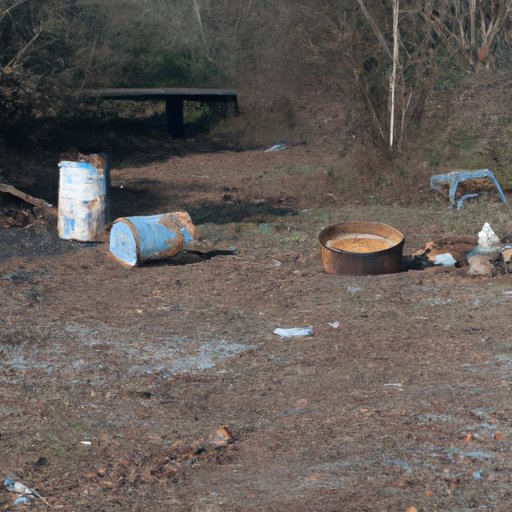Understanding Military Burn Pits: Hazards and Solutions
Military burn pits are large areas of land on military bases where waste materials, such as garbage, medical waste, and chemicals, are burned. Burn pits have been used by the military as a way to get rid of waste more conveniently and efficiently. However, it has become clear over the years that the use of burn pits poses significant hazards to the health of service members and surrounding communities, as well as harm to the environment.
The Danger of Military Burn Pits: Exploring the Damage to Service Members’ Health
Studies show that exposure to burn pits poses serious health risks to service members. When waste materials are burned, they release toxic chemicals into the air, including benzene, dioxins, and volatile organic compounds. These chemicals can cause a range of health problems, including respiratory issues, cancers, and neurological disorders.
Service members who have been exposed to burn pits report experiencing various health problems. These can include difficulty breathing, chronic coughing, gastrointestinal issues, and skin conditions. Some military personnel who have had prolonged exposure to burn pits have reported developing lung cancer, multiple sclerosis, and neuropathy.
A Comprehensive Guide to Understanding Burn Pits and How They Affect Our Environment
Burn pits work by burning waste material in open-air pits, releasing toxins and chemicals into the air. The burning of hazardous wastes such as plastics and batteries also releases toxic metals like lead, arsenic, and mercury.
Air pollution is by far the most significant environmental impact of burn pits. It can spread far beyond the fences of military bases and into surrounding communities. The pollutants released by burn pits can also contaminate soil and water, making them dangerous to consume.
From Trash to Health Hazard: Examining Military Burn Pits’ Effects on Local Communities
Burn pits’ impact on local communities around military bases is a major concern. The cumulative effect of exposure to nearby residents can lead to severe health risks such as asthma, respiratory illnesses, heart disease, and even cancer. In some cases, the health problems caused by exposure can be more severe than those experienced by military personnel exposed to burn pits.
Several community groups and organizations are actively fighting against the use of burn pits and advocating for safer solutions. One such group, Burn Pits 360, works to raise awareness of the issue and provides support to those affected by burn pits.
Serving Our Country, Endangering Our Lives: A Look at Burn Pits and Military Personnel Health
Exposure to burn pits poses serious health risks to military personnel. Studies show that service members who have been exposed to burn pits during deployment are more likely to experience long-term health problems than those who have not been exposed to the burning of waste materials.
Since 2008, more than 200,000 veterans have reported exposure to burn pits while serving in Iraq and Afghanistan. The Department of Veterans Affairs (VA) has recognized burn pit exposure concerns and has set up a burn pit registry to help establish a link between exposure to burn pits and long-term health problems. However, some veterans feel the VA is not doing enough to help the thousands of individuals suffering from exposure-related illnesses.
An In-Depth Exploration of the Controversial Use of Burn Pits in Combat
The use of burn pits in combat and operational settings is a controversial issue. In some cases, it is the only viable way to dispose of waste. However, burn pits have been linked to severe health risks, environmental destruction, and social concerns. Critics argue that safer alternatives like incineration, recycling, and treatment should be used instead of burn pits, but these methods are often more expensive and difficult to implement in war zones.
From Iraq to Afghanistan: The Story of Military Burn Pits and Their Deadly Legacy
Burn pits have been used by the military since the 1990s. Their use became more widespread during Operation Iraqi Freedom and Operation Enduring Freedom, where military bases were located in remote locations without proper waste disposal facilities. Burn pits were used regularly to get rid of waste materials, ignoring the health risks posed to military personnel and surrounding communities.
The legacy of burn pits is a sad one, with many service members and their families suffering for years from exposure-related illnesses. The use of burn pits continues to this day, but the military has taken steps to mitigate their harmful impacts on health and the environment.
Conclusion
Military burn pits are a pressing issue that causes serious health risks to military personnel and local communities and harms the environment. It is critical to raise awareness about this issue and advocate for safer alternatives to burn pits. As individuals, we can help by supporting organizations fighting to raise awareness about military burn pits and the harm they cause. By doing so, we can help protect the health and well-being of military personnel, neighbors, and the environment.
